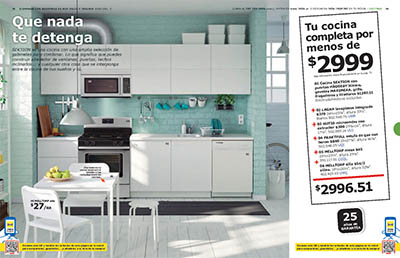
In 2014 I read an article in www.cgsociety.org about IKEA’s efforts of changing their methods for the creation of images for their catalogs utilizing virtual cameras instead of traditional photographic cameras. The author, Kirsty Parkin, interviewed Martin Enthed, who was then an IT Manager but now is the Development and Operations IT Manager for IKEA. He spoke about the start of modeling products in 2004 and the first appearance in a catalog of a seat called “Bertil” in 2006. Their intention was not to replace traditional photography but to develop new methods in their communications. By 2010 they were creating complete scenes.
 Although everything is designed by IKEA, their products can be fabricated anywhere around the world. Before, to create a scene, they had to ship all the prototypes to their studios, build the scenes and then photograph them. Every photo, a great exercise in coordination between many people of multiple disciplines. For IKEA it was clear that CGI (computer graphics imaging) eliminated many headaches, it provided many freedoms and it was more economical when creating their images. In 2004, IKEA used 60%-78% CGI in their catalogs. In a presentation given by Enthed on March, 2016 he said that 75% of the individual products and 30% of their scenes that appear in their catalogs are CGI. IKEA is only one example of many companies that have seen the advantages that exist when using CGI for their development and advertising of their products.
Although everything is designed by IKEA, their products can be fabricated anywhere around the world. Before, to create a scene, they had to ship all the prototypes to their studios, build the scenes and then photograph them. Every photo, a great exercise in coordination between many people of multiple disciplines. For IKEA it was clear that CGI (computer graphics imaging) eliminated many headaches, it provided many freedoms and it was more economical when creating their images. In 2004, IKEA used 60%-78% CGI in their catalogs. In a presentation given by Enthed on March, 2016 he said that 75% of the individual products and 30% of their scenes that appear in their catalogs are CGI. IKEA is only one example of many companies that have seen the advantages that exist when using CGI for their development and advertising of their products.
Allow me to help you if you have a pending project, a chair, lamp, tool, etc. The models can form part of catalogs, advertising in the press or internet, without the associated costs of prototyping, material costs and contracting professional photographers.

 Español
Español
This is a really good read for me, thank you!